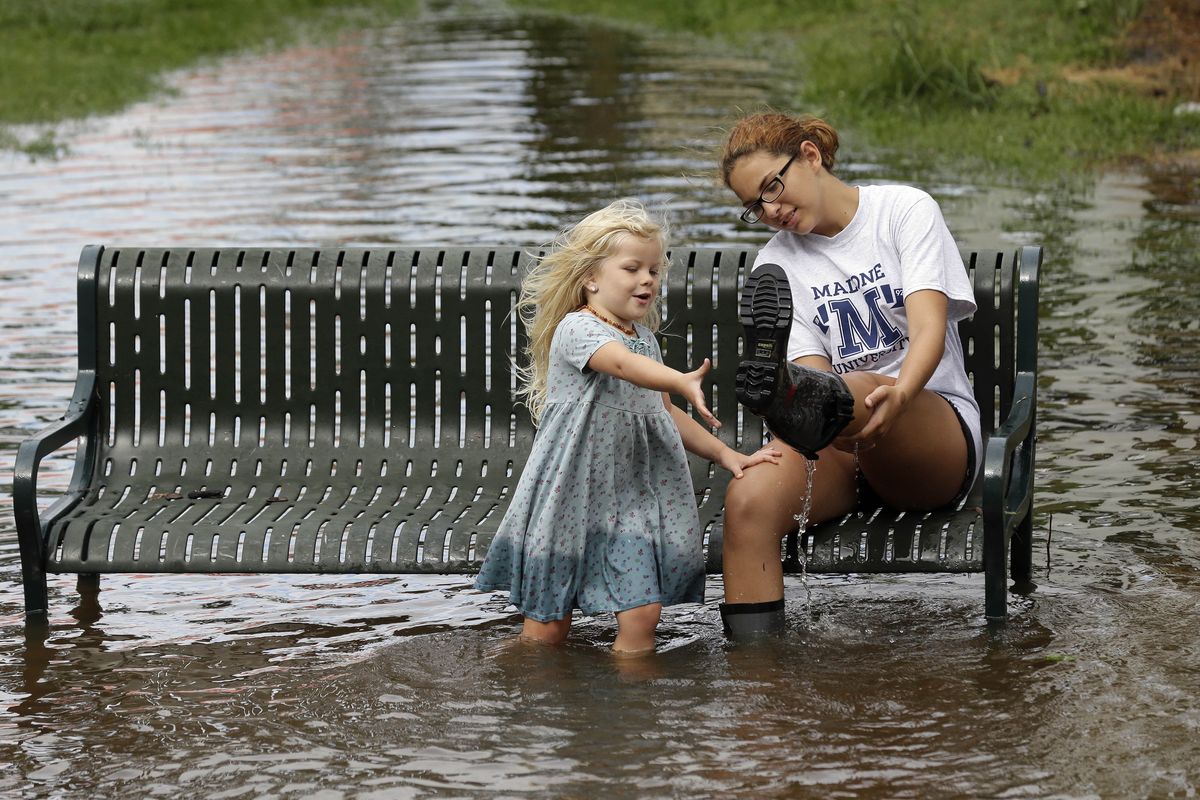Hurricane brushes North Carolina coast
Arthur buckles highway; thousands without power

KILL DEVIL HILLS, N.C. – Proving far less damaging than feared, Hurricane Arthur left tens of thousands of people without power Friday in a swipe at North Carolina’s dangerously exposed Outer Banks and then brought lousy Fourth of July beach weather to the Northeast as it veered out to sea.
The weather along the narrow barrier islands – whose beaches draw hundreds of thousands of tourists every summer – already had cleared by Friday afternoon as Arthur scooted north and its outer bands scraped the Delaware and New Jersey shores. Forecasters predicted the storm would weaken before its center moves over western Nova Scotia in Canada early today.
While state and local officials worked to restore access to Hatteras Island and help those who had suffered storm and flooding damage, the effects of the hurricane mostly were confined to that part of the state. Farther south, the beaches once again were packed with people soaking up the sun.
“The North Carolina beaches are open for business and they’re open for tourists,” Gov. Pat McCrory said. “The umbrellas are going up as we speak right now.”
Arthur struck North Carolina as a Category 2 storm with winds of 100 mph late Thursday, taking about five hours to move across the far eastern part of the state.
At the height of the storm, more than 40,000 people lost power, and the rush of water from the ocean on one side and the sound on the other side buckled part of North Carolina Highway 12 in a spot on Hatteras Island that was breached during Hurricane Irene in 2011. Dozens of workers were heading to fix the highway, and the Department of Transportation said it was confident the road would reopen today as long as an underwater sonar test of a key bridge found no problems.
No injuries or deaths were reported. After praising emergency officials and saying the state dodged a bullet, McCrory said he was heading to the beach himself for an Independence Day parade in Southport.
By Friday night, the hurricane had weakened to a Category 1 storm with 80 mph winds. Its center was about 95 miles south-southeast of Chatham, Massachusetts.
While the Northeast wasn’t expected to take a direct hit, the rain from Arthur’s outer bands was disrupting the holiday. Fireworks displays in New Jersey and Maine were postponed until later in the weekend. Tropical storm warnings were in effect for coastal areas as far north as Cape Cod, Massachusetts. Tropical storm watches and warnings were in effect for Nova Scotia and New Brunswick in southeastern Canada.
Still, the first hurricane known to strike the U.S. on July 4 caused some frayed nerves on North Carolina’s Outer Banks – a 200-mile string of narrow barrier islands with about 57,000 permanent residents and roughly 250,000 visitors on most summer weekends. A mandatory evacuation was issued for the southern Outer Banks. But while most visitors left, many residents stayed, accustomed to hurricanes that strike the area on average about every four or five years.